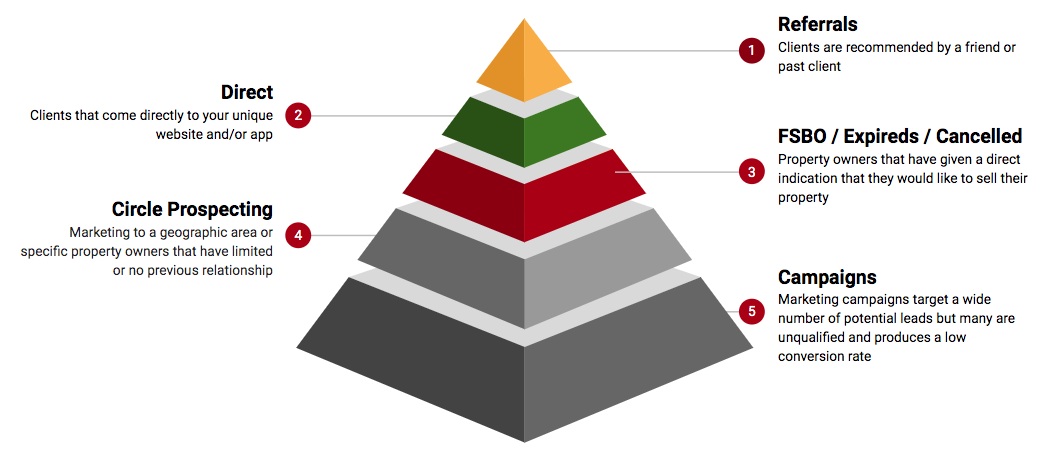Lead Sources

Your success in sales is directly tied to the quality of the clients you discover and choose to work with. Understanding the differences between lead sources will give you an advantage to convert leads and to better utilize your time.
The conversion rate of lead sources is an important metric to measure. This number is expressed by calculating the total number of potential leads that originate from the source compared to the amount of leads that were converted to a sale.
Conversion Rate = Total Leads from Source / Total Leads from Source converted to Sale
The pyramid above represents the five major pillars of Residential Listing Lead Sources and their respective conversion rates. Referral leads generally have the highest conversion rate. Meaning, a referral lead will likely take less effort overall than other lead sources to get a closed deal.
Lead Source Types
Referrals
Also known as your “Personal Sphere.” This includes close friends, family and past clients or a referral from one of those.
Direct
Clients that come directly to your unique website and/or app
Expired Listings
These are properties that were previously listed with a professional Broker and did not sell. These include expired, cancelled and withdrawn listings found on the local MLS
For Sale By Owner
Property owners that are attempting to sell their home without an agent and using basic marketing
Circle Prospecting
This is marketing to a geographic area or specific property owners that you have limited or no previous relationship
Campaign
Marketing campaigns target a wide number of potential leads but many are unqualified and produces a low conversion rate